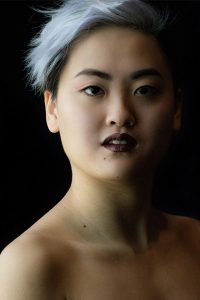Major: Dance
Minor: Psychology

Title: Contemporary Choreographic Perspectives
Describe your project: My project is to research performance and choreographic techniques from various contemporary/modern companies and utilizes that information to create my Senior Capstone Work, a twelve-minute dance performed by four dancers. Over the summer, I studied with the Paul Taylor Modern Dance Company (founded in 1954) and the Peridance Contemporary Dance Company (founded in 1984). This winter, I will be studying abroad with Ann Sofie Clemmensen to Denmark to research international contemporary techniques.
Who is your mentor for your project?
Professor Hess is the chair of the dance department and has mentored me throughout my university experience, offering guidance from course work to compositional ideas. I have a very trusting relationship with her and I really value her advice and input.
How did you become interested in this project?
I wanted to gather as much research and experience in the process of creating my senior capstone work. I wanted to continue my dance technique training while jumping in to a company lifestyle to gain a better understanding of the career I was pursuing. I learned of the Paul Taylor Modern Dance Company through a UMBC faculty member, Constance Dinapoli, and I discovered the work of the Peridance Contemporary Dance Company when a UMBC alumni became an apprentice there. Those companies, though vastly different in style, carry choreographic ideas and themes that captured my attention.
What has been the hardest part about your research/what was the most unexpected thing about being a researcher?
A natural change in creating a new choreographic work is translating my artistic vision to my dancers while allowing their own artistry and interpretation. All the dancers I am working with are inexperienced learning movement created by a student choreographer and performing in the modern-contemporary genre. During the process of creating the work, I had to take my time and have patience explaining the different movement styles because what was natural to me was foreign to them. Another challenge, while expected was nevertheless difficult, was working within a constrained amount of time, to complete and premier the work.
What has been the most rewarding part?
The work premiered November 8th and 9th, and when I was able to watch the piece in full performance mode, I felt fulfilled. I had been focusing on tiny (but important) details and giving my cast reminders right before the show, unsure if they would be able to embody everything. Watching the piece and hearing the audiences reaction, everyone taking their own meaning but the movement still resonating within them, was the most rewarding.
How will you disseminate your research?
I plan to present my research at URCAD 2020 by premiering my senior capstone piece again. Prior to the next performance, I plan to look over the piece and discuss with my mentor any changes or adjustments I can make.
What is your advice to other students about getting involved in research?
Research derives from your passion(s), the need to explore, discover, and create. The work is never quite done, but that is what makes the research thrilling. For myself, dance is forever evolving and changing, and I know that there will always be new inspiration and the need to share my creative outlook.
What are your career goals?
After I graduate in Spring 2020, I plan to work with a professional dance company under contract while still creating pieces to gain a choreographic fellowship.
11/12/19